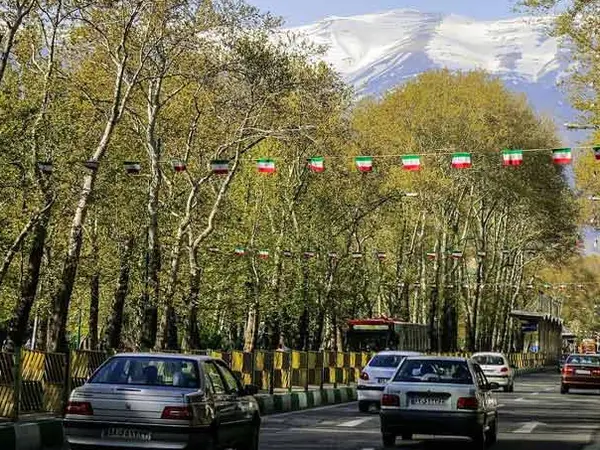Iranian google map users could not believe their eyes when they saw the name of Tehran’s longest avenue, Valiasr, has reverted to ‘Pahlavi’, the last Dynasty in Iran.
The user-initiated change which people began noticing on Wednesday is not unprecedented. In August 2015 the name of the bustling street, which runs nearly 18 km from the south of the capital to north, reverted to Pahlavi for a short time. The state broadcaster IRIB reported the incident at the time and called it “Google’s mischief”.
Similarly, the name of Vozara hotel-apartment on Tehran’s Vozara street, now shows as Mahsa Amini Hotel Apartment, presumably because it was at the morality police headquarters on Vozara street that she had a stroke caused by blows to her head while she was being arrested. On social media there have been many calls to rename the street after her.
Google, however, may have nothing to do with the change, which supporters of monarchy in Iran have hugely welcomed. Although individual users cannot change city, town, village and street names on the maps, names can be altered using Google’s feedback feature of the maps if a large group of users report the names are wrong and suggest alternative.
Google maps may have become a new battleground where the opposition demanding regime change and the authorities and their supporters fight over street and even city names. Both sides have the means to fight the battle, but who wins will remain to be seen.
“This street was built by [Reza Shah] Pahlavi and its name will always remain Pahlavi,” one the many twitterati who welcomed the change wrote.
The boulevard, which is also the longest in the Middle East, has gone through several names since it was completed in 1933 after a construction period of eleven years. The tree-lined road with massive trees on both sides was originally called Pahlavi Avenue, after King Reza Shah Pahlavi, the founder of the Pahlavi dynasty.
Like many other roads and even cities and towns, the street was renamed after the Islamic Revolution in 1979. The first name chosen by revolutionaries was Mossadeq, after Mohammad Mossadeq, the former nationalist prime minister under the Shah who was venerated by many for nationalizing Iran's oil.
Two and half years after the revolution, when Islamists had consolidated their power in the country and completely driven nationalists to the sidelines, the road was once again renamed, this time to Valiasr, to reflect the change. Valiasr (vali-ye asr) refers to Imam Mahdi, an Arab descendant of Prophet Mohammad, who Shiites believers say has been in occultation since the 9th century AD.
In the coming years many other place names underwent similar changes. Most new roads, squares, and highways were named after historical and contemporary Islamic figures such as Sheikh Fazlollah [Nouri] (1843-1909).
Nouri was a Qajar period cleric and politician who was hanged as a traitor by revolutionaries during the Iranian Constitutional Revolution (1905-1911) for defending the old order and opposing constitutionalism and the establishment of a parliament. While the religious establishment venerates Fazlollah and calls him a shahid (martyr), to many ordinary Iranians to this day Fazlollah is a symbol of reactionary religious establishment because he supported the king’s coup against the constitutionalists and opposed modernization of the country.
